6.1.5.6 Lab – System Utilities in Windows (Answers)
Introduction
In this lab, you will use Windows utilities to configure operating system settings.
Recommended Equipment
The following equipment is required for this exercise:
- A computer running Windows
Step 1: Open the management console.
a. Open the Microsoft Management Console. Click Start, type mmc, and press Enter.
Note: In Windows 8, type mmc in the Search Charm.

b. The Console1 – [Console Root] window opens. To build your own custom console, click File > Add/Remove Snap-in.
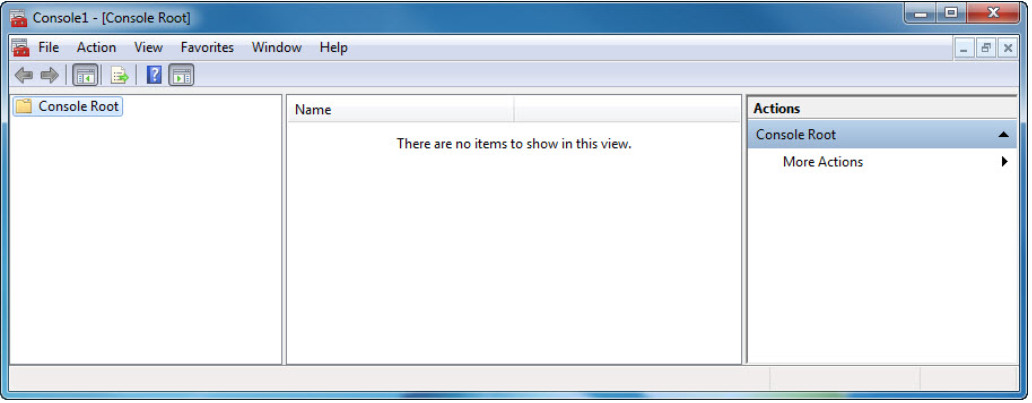
c. The Add or Remove Snap-ins window opens. To add a folder snap-in, to organize your snap-ins, scroll down until you see the Folder snap-in. Select Folder and click Add>.
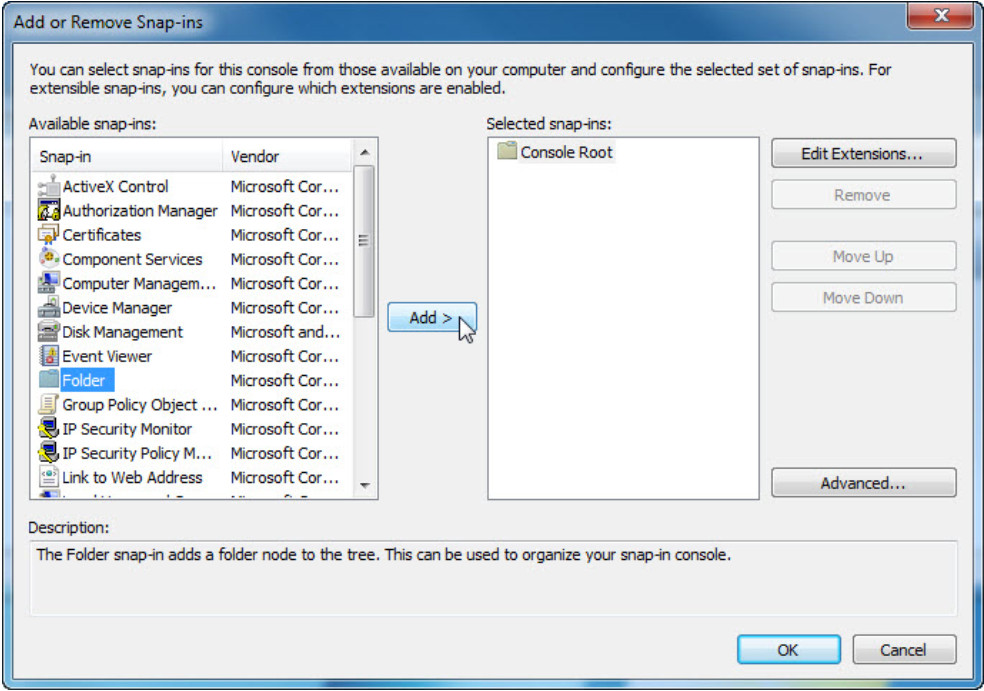
d. To add the Link to Web Address snap-in, scroll down and select Link to Web Address. Click Add>.
e. The Link to Web Address wizard opens. In the Path or URL: box type http://www.cisco.com. Click Next>.
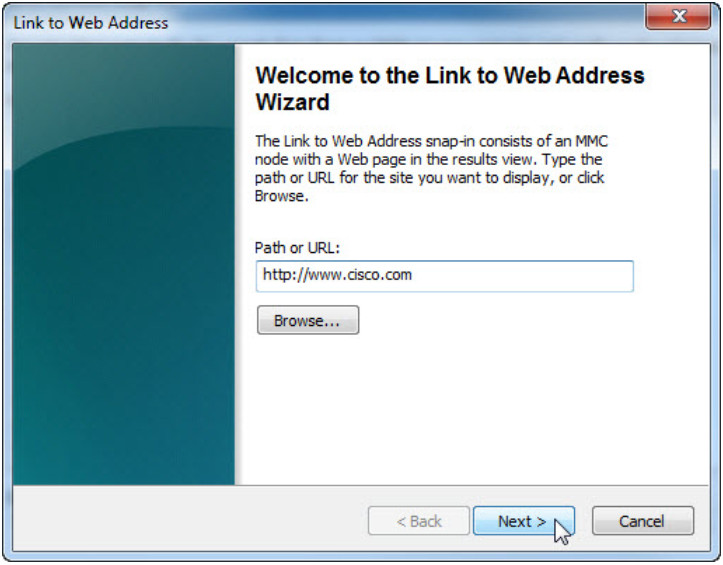
f. In the Friendly name for the Link to Web Address snap-in box, type Cisco. Click Finish.
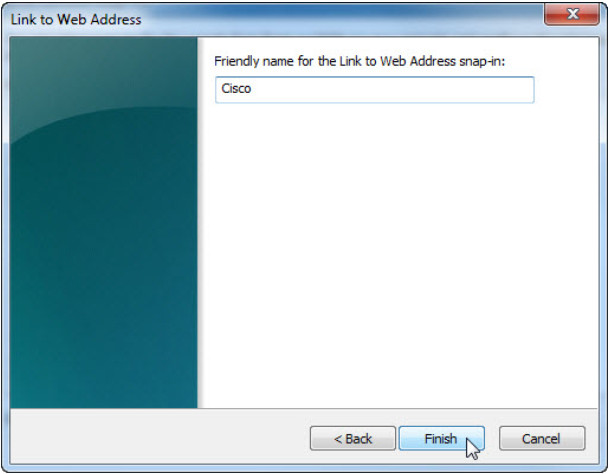
Step 2: Create a custom management console.
a. To add snap-ins to the folder snap-in, click Advanced.
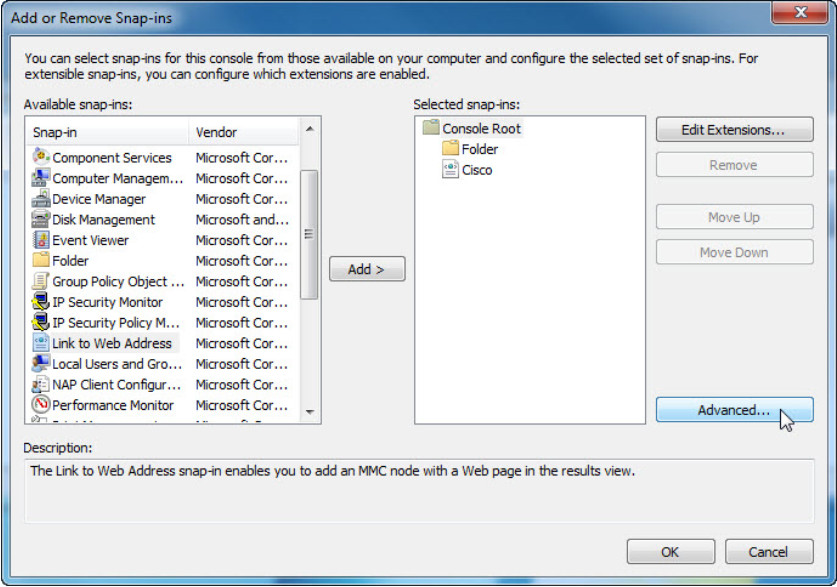
b. The Advanced window opens. Check the box next to Allow changing the parent snap-in. Click OK.
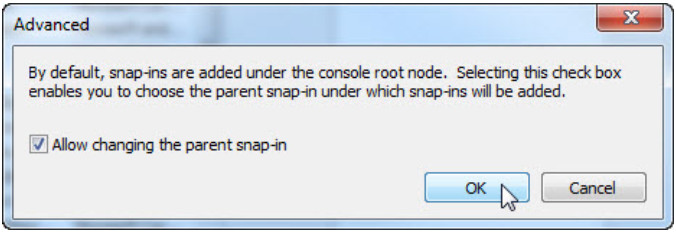
c. A drop-down menu appears for Parent snap-in. In the Parent snap-in box, select Folder.
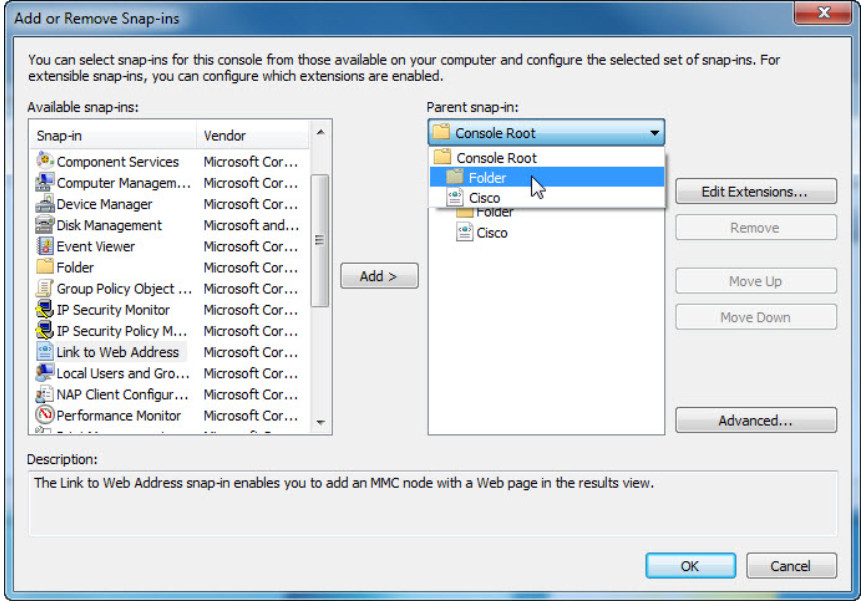
d. Add the following snap-ins: Computer Management, Device Manager, and Disk Management.
Note: When you are asked what computer the snap-in will manage, select the default by clicking Finish. Click OK to accept all changes.
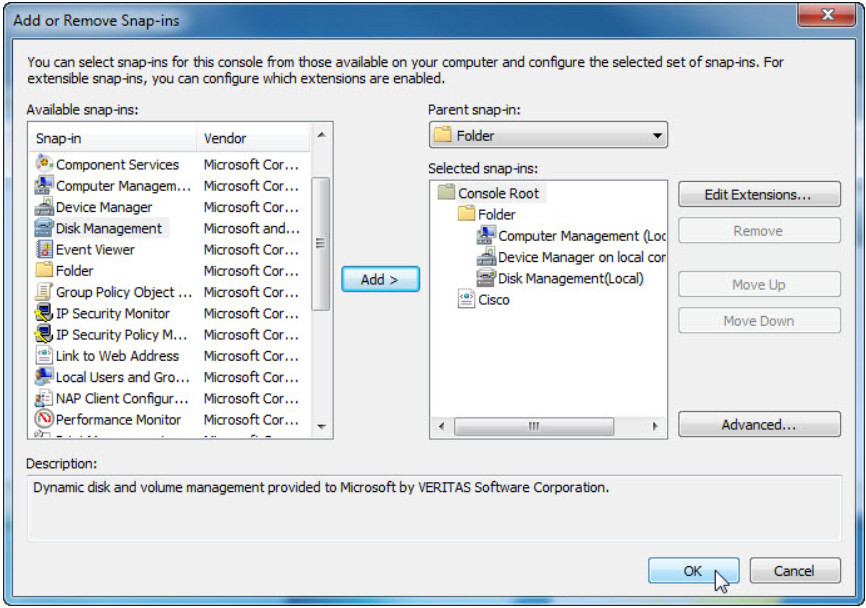
e. The Console1 window opens. Right-click the Folder icon and select Rename. Change the name of the folder to Management Tools.
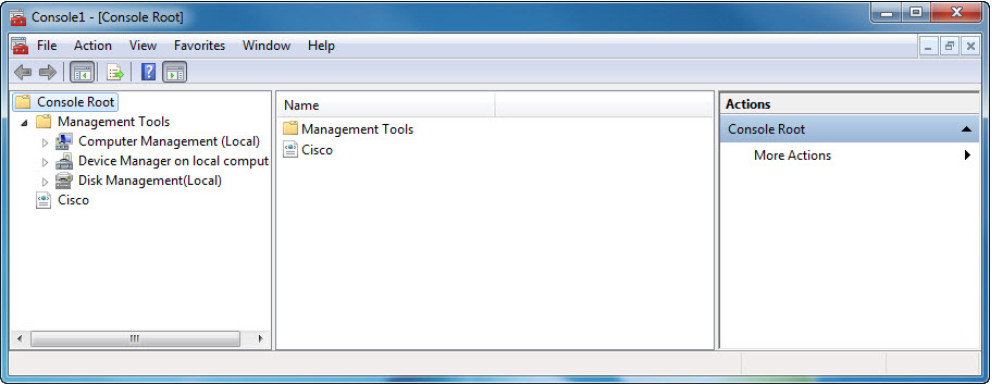
f. To save the custom console, click File > Save As. Change the file name to your name. Example: John’s Console. Change the Save in box to Desktop. Click Save.
g. Close all open windows.
h. On the desktop, double-click the Console icon to re-open the console with your snap-ins.

i. Review the Management Tools folder by double-clicking on the tools. Close the Console window when you finish your review.
Step 3: Change your desktop background settings.
a. To open the Choose your desktop background window, right-click the Desktop, select Personalize and click Desktop Background.
What is the background picture?
Answers may vary.
b. Click the Picture location drop-down button and select Solid Colors. Select a blue color.
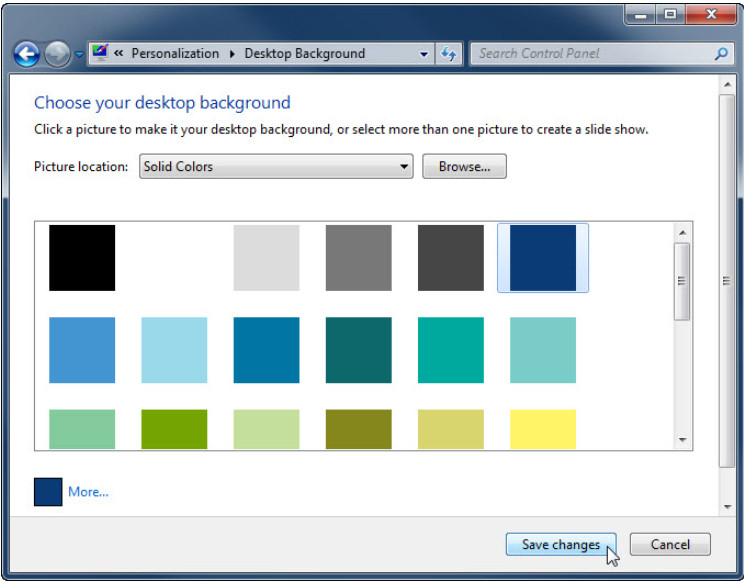
c. Click Save changes. The computer screen should now have a blue background. If not, ask the instructor for assistance.
d. Close all open windows.
Step 4: Open the registry editor.
a. To open the Registry Editor, click Start and type regedit. Press Enter.
Note: Do not make any changes in the Registry Editor without instructor permission.
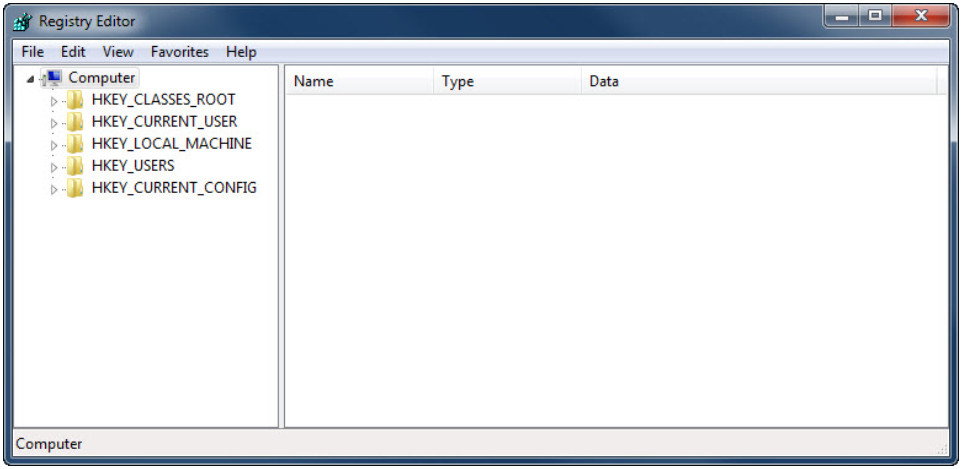
b. Select the HKEY_CURRENT_USER entry. To search for the Background key, click Edit > Find…, and type Background. Click Find Next.
Note: in Window 8, expand the HKEY_CURRENT_USER entry by clicking the arrow to the left. Select Control Panel from the list.
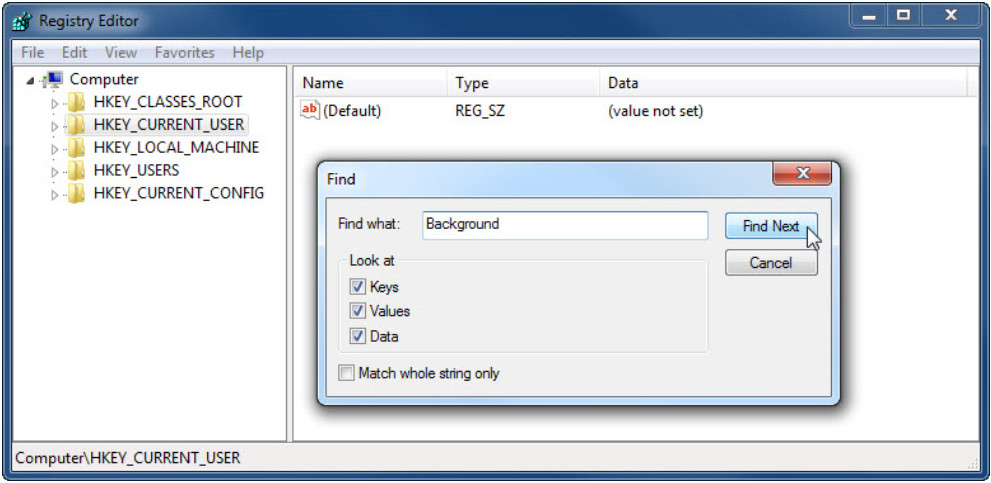
c. The Background value is located. Leave this window open.
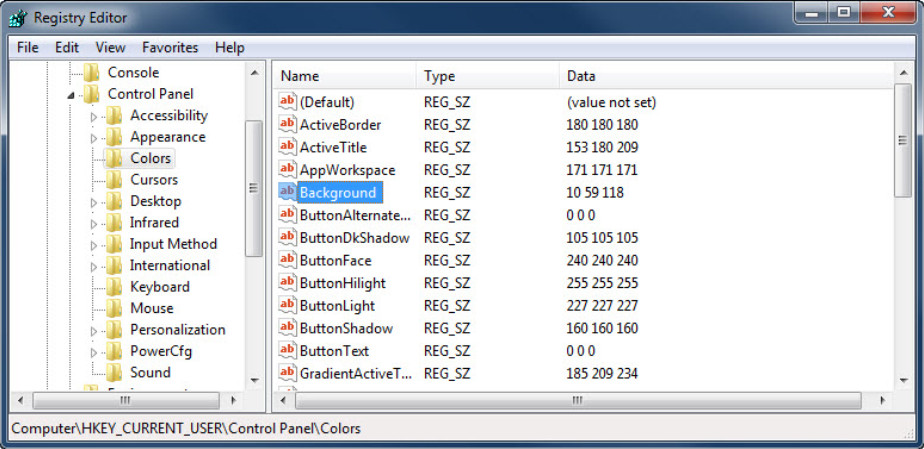
In which folder is the Background located?
Colors
What is the data value of the Background (hint – it has three numbers that correspond to red, green, and blue)?
These numbers may vary depending on the blue color that was selected for the background color. In the example, the numbers are 10 59 118.
Step 5: Export a registry key.
We will now export the HKEY_CURRENT_USER\Control Panel\Colors folder.
a. In the left pane, select the Colors folder and click File > Export.
b. Save the file to the Desktop with the name BlueBKG.
c. At the desktop, right-click the BlueBKG.reg icon and select Edit.
d. Notepad opens displaying the contents of BlueBKG.reg.
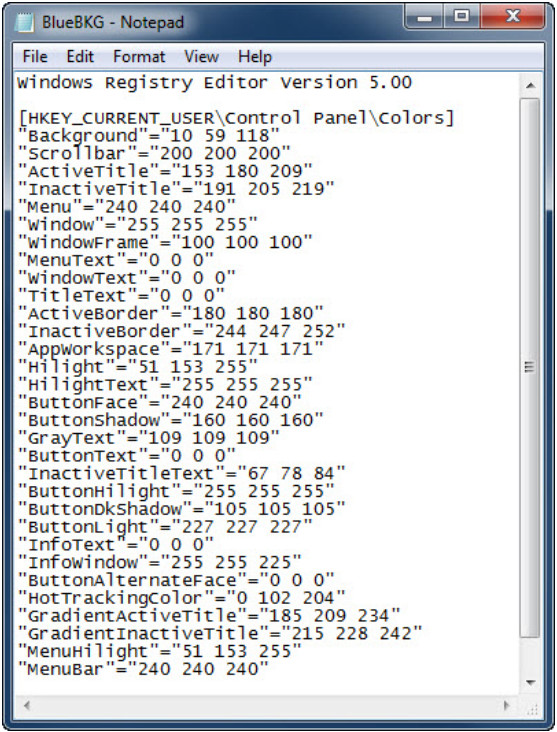
What is the data value of the Background?
Answers may vary. 10 59 118 in the example.
e. Close the BlueBKG.reg – Notepad window.
f. Open the Choose your desktop background page in Personalize appearance and sounds by right-clicking the Desktop > Personalize > Desktop Background.
g. Click the Location drop-down button and select Solid Colors. Select a red color.
h. Click Save changes. Close the Personalization window.
i. The desktop should be red. Click the Registry Editor window.
j. On your keyboard, press F5 to refresh the Registry Editor window.
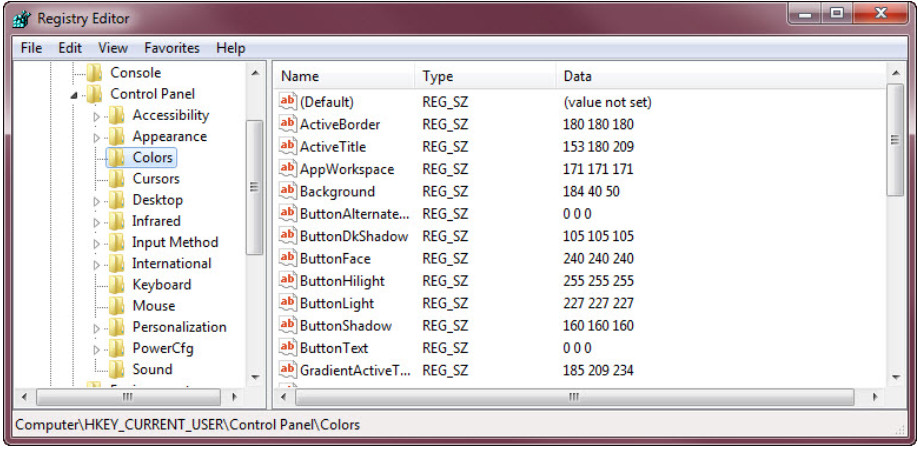
What is the data value of the Background? Answers may vary based on the shade of red selected in Display Properties.
184 40 50
Step 6: Import a registry file.
We will now import the BlueBKG.reg file.
a. Click the Registry Editor window.
b. Click File > Import. Locate and click the BlueBKG.reg file then click Open.
c. The Registry Editor informational message opens letting you know that keys and values have been successfully added to the registry. Click OK.
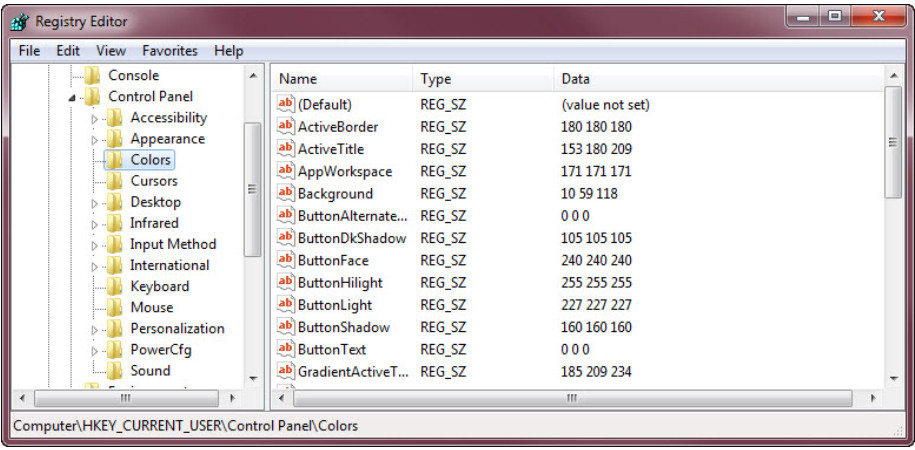
d. Select the Registry Editor window.
What is the data value of the Background?
Answers may vary. The example shows 10 59 118.
What is the color of the desktop?
Red
e. Restart the computer.
What is the color of the desktop?
Blue
f. Reset Display Properties Background to the original settings.
g. Close all open windows.
h. Delete the custom console and BlueBKG file on the desktop.
Reflection
1. Why would it be beneficial to add snap-ins to the mmc that are for other computers on the network?
Answers may vary. It would make it easy to configure and monitor other computers that do not have monitors, keyboards or mice, or that are not easily accessible.
2. After restarting the computer, why was the desktop color changed?
Importing the registry file modified the registry to contain a value for the desktop that was not the same as the current value. When the computer started, this value was read from the registry to make the desktop that color.
